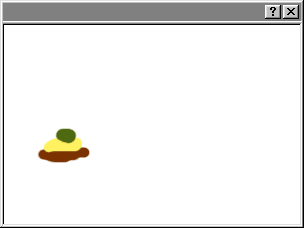







with
Adel Alameddine
Ana Alex Tabatadze
Anna Huhn
Daniel Neubacher
Hannah Regenberg &
Anna Roberta Vattes
Jessica Mester
Lucas Odahara
Lulu Mendelova
Max Schaffer
Norman Sandler
Sabrina Mandanici
Z.Schmidt
The title of a/topic N°3 »point line surface solid simulacrum« refers to a quote by Thomas McEvilley from the preface of the text »Inside the White Cube« by Brian O‘Doherty that by now has already become somehow canonical, where it states the following: »the beginning was a blank where there appeared inexplicably a spot which stretched into a line, which flowed into a plane, which folded into a solid, which cast a shadow, which is what we see.« Hereafter the author ends his platonic enumeration not with »shadow« but with »simulacrum« by writing: »This set of elements – point, line, surface, solid, simulacrum – conceived as contentless except in their own-nature, is the primary equipment of much of modern art.« Therefore the formal development no longer ends in the shadow but rather in the simulacrum. It could be considered a reflection as well as an illusion, similar but not identical, a simulation, a new, second, virtual hyperreality.
Built on the essential reference »point line surface solid simulacrum« regarding form and content, a/topic N°3 will be published for the first time in digital form as a curated online exhibition with works by Adel Alameddine, Ana Alex Tabatadze, Anna Huhn, Daniel Neubacher, Hannah Regenberg & Anna Roberta Vattes, Jessica Mester, Lucas Odahara, Lulu Mendelova, Max Schaffer, Norman Sandler und Z. Schmidt and texts by Sabrina Mandanici.
a/topic is a space for artistic perspectives in a magazine format. Since 2013 the project has been providing a platform for the works of young artistic positions. One or more associative quotes from a selected text represent the starting point for every collaboration. Edited and curated by Yvonne Bialek, Nina Kruse und Anna Maria Müller, designed by Kruse & Müller, a/topic is published in Berlin twice a year.
Special thanks to Anna Gien and Robert Gordon.
Der Titel von a/topic N°3 »point line surface solid simulacrum« entstammt dem Vorwort von Thomas McEvilley zum mittlerweile kanonischem Text »Inside the White Cube« von Brian O’Doherty, wo es heißt:»the beginning was a blank where there appeared inexplicably a spot which stretched into a line, which flowed into a plane, which folded into a solid, which cast a shadow, which is what we see.«
Diese platonische Aufzählung beendet der Autor im Folgenden jedoch nicht mehr mit »shadow« für »Schatten«, sondern mit »simulacrum«, indem er schreibt: »This set of elements – point, line, surface, solid, simulacrum – conceived as contentless except in their own-nature, is the primary equipment of much of modern art.«
Die formale Entwicklung endet nun nicht mehr im Schatten, sondern im Simulacrum. Es kann ein Abbild und Trugbild sein, ähnlich doch nicht gleich, eine Simulation, eine neue, zweite, virtuelle Hyperrealität.
Auf der Grundlage von »point line surface solid simulacrum« als formaler und inhaltlicher Basis entsteht a/topic N°3 erstmals in digitaler Form als von Yvonne Bialek, Nina Kruse und Anna Maria Müller kuratierte online Ausstellung mit Arbeiten von Adel Alameddine, Ana Alex Tabatadze, Anna Huhn, Daniel Neubacher, Hannah Regenberg & Anna Roberta Vattes, Jessica Mester, Lucas Odahara, Lulu Mendelova, Max Schaffer, Norman Sandler und Z. Schmidt und Texten von Sabrina Mandanici.
Besonderer Dank an Anna Gien und Robert Gordon.
opening hours
10 am – 6 pm UTC+2
Tuesday – Sunday
Mondays closed

download
floor plan




Yvonne Bialek, Nina Kruse
& Anna Maria Müller
Developer Robert Gordon


Simulacrum. -
The idea of reproduction, of being similar but different, simultaneously. The artifact is replaced by a virtual ‘anything goes’ of fluid possibilities, permissions, and boundaries.
Excitement.
If the question of the real – that is, ultimately, the physical – is obsolete, how do we sense, see, follow, and find?
Is it possible to say or make anything new? Everything has been said and done, they say, so the only thing to do is to repeat, but to repeat somewhere, somehow unexpected.


Virtual.
- a) Existing or resulting in essence or effect though not in actual fact, form, or name;
b) Suggestion of visual closeness or intimacy.
How to become intimate with a work of art in a virtual setting?
Suggestion: The virtual pretends a relationship of calling somebody by their first name as opposed to by their last name. The difference, however, lies in the fact that there is no person to address, but rather an entity that is in constant flux.
At stake: «The possibility of a particular form of reciprocity, intimacy. Something about actual touch; touch in relation to presence.”
(Ann Lauterbach, Under the Sign)


– a) Vehicle to transform doubt into the engine of curiosity;
b) Junction point of the mind-body dyad that enables the acts of thinking, creating, believing.
»The true greatness of the hand lies in its patience. The calm, slowed down processes of the hand have created the world, we would like to live in.«
(Elias Canetti,
Crowds and Power)
An obligation of art:
To embrace, question, play with given structures in order to change and re-arrange them into a language that does not perform or re-enact, but sensually and reflectively provides a different kind of knowing – a machinery for self-identification and there- by identification of the other.
– Entity that is defined by elusory boundaries, instead of limita-
tions.
They are transitory, without meaning, yet of unknown consequence. The confusion whether we are a part of, or apart from, this entity.
Emergency.
As Wallace Stevens wrote:
But how does one feel?
One grows used to the weather, The landscape and that; And the sublime comes down
To the spirit itself,
The empty spirit
In vacant space.
What wine does one drink?
What bread does one eat?
















